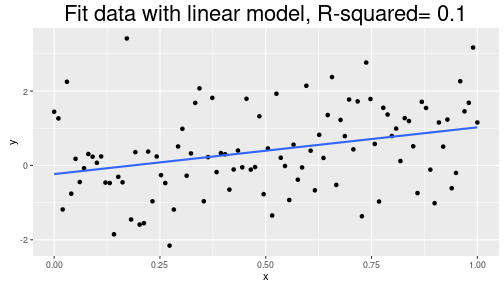The objective is to fit the following expression with a linear model:
\[y_i=x_i + \varepsilon_i \qquad \text{for}~i = 1,\dots,n\]
where \(\varepsilon_i = \mathcal{N}(\mu, \sigma)~\text{for}~i = 1,\dots,n\).
We provide the user with three sliders:
- the number of points \(n\) (our measurements);
- the mean of the Gaussian random noise, \(\mu\);
- the standard deviation of the Gaussian random noise, \(\sigma\).
The linear model is illustrated via a plot and the \(R^2\) value is
provided as a measure of the quality of the fit.

